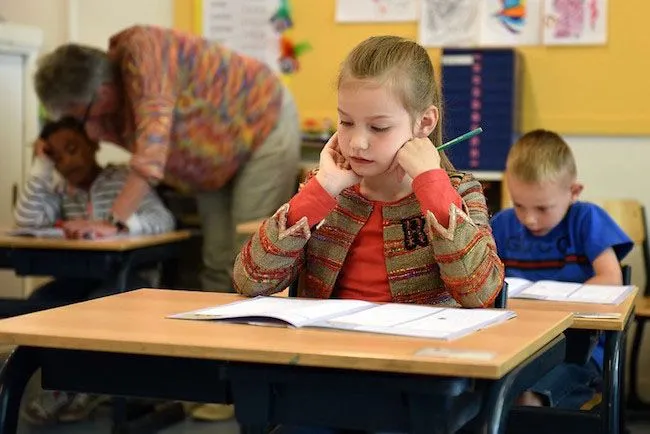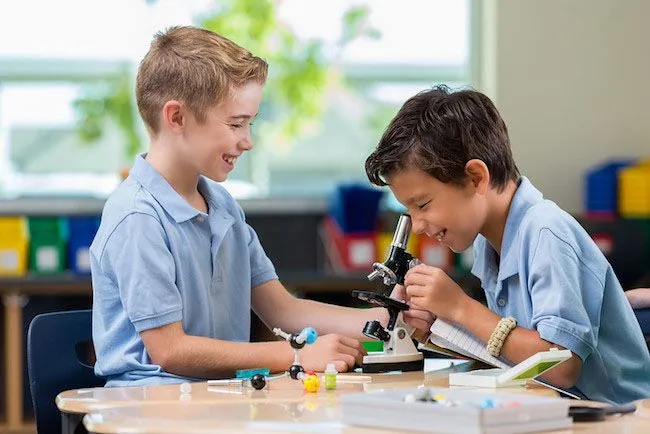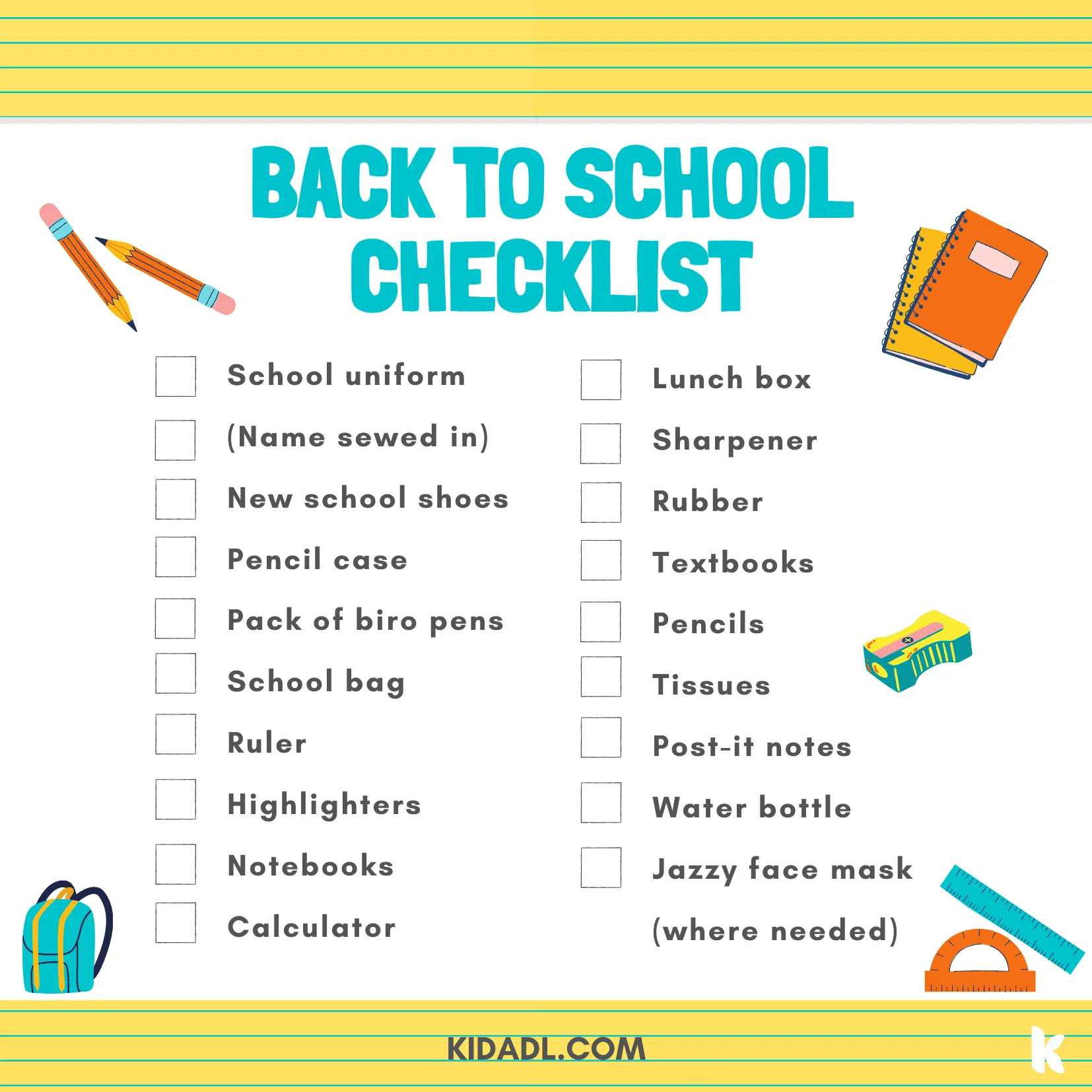FOR ALL AGES
There’s never been a school year like it. Millions of children haven’t set foot in a classroom for half a year. The resumption of classes in September will feel like a fresh beginning, though one with lots of handwashing, social distancing and, for some, face masks.
You’ve probably worked this out by now, but all school pupils are expected back in class from September. The first sentence on the Government’s education page makes this crystal clear: “All pupils, in all year groups, will return to education full-time from the beginning of the autumn term.”
Debate has raged over this issue. According to the UK Government: “The Chief Medical Officers from all four nations in the United Kingdom have made it clear that the overall risks to children from coronavirus (COVID-19) in relation to education settings is low and that the risks associated with not being in school certainly outweigh those of being in school.” It may be that school staff members are more at risk from the resumption of classes than the pupils themselves. Schools are taking many measures to reduce that risk.
Social distancing: This will probably be the most noticeable difference. Classrooms, dining rooms and other spaces will have been rearranged to keep pupils at least a metre apart. One-way systems will be in place for some schools. Pupils will also be asked to keep their distance in other settings wherever possible. (Teens: that includes ‘behind the bike sheds’.)
‘Bubble’ will be a much-heard word: A key part of containing the virus is keeping groups of children separate from one another. Your child will likely be in a ‘bubble’ with their classmates (or year group in smaller schools), and will not mix so readily with children from other classes. How this works in practice will differ from school to school. You might find that start and end times differ (typically by 10-15 minutes per ‘bubble’), with allowances made for families who have children of different ages in the same school. Assemblies will be smaller, or done to multiple rooms via video link. Lunch times will be staggered to keep bubbles separate. No more Potions with the Slytherins for Harry Potter.

Teaching assistants probably won't be doing this for the time being... Image from Pixels
Expect more hand washing: Schools have been encouraged to promote good hygiene. Hand washing will become part of the daily routine (if it wasn’t already), and hand sanitisers will be abundantly available.
Avoid sharing of stuff: No trading of football stickers or borrowing each other’s novels. Kids should only take the essentials into class and not pass items among classmates. No toys.
Non-contact sports: Games lessons will be a little more rigorous when it comes to social distancing and touching of surfaces. Expect more outdoor tennis and cross-country, and less rugby or Greco-Roman wrestling (was that just my school?). Where some contact is likely (e.g. football), the message about washing and cleaning thoroughly will be hammered home.
Breakfast and after-school clubs: In theory, these can also resume from 1 September. However, keeping children within their bubbles before and after regular classes may be a resource challenge for some schools. Not all will offer these services right away.
As already noted, the school day may be staggered for different age groups, to minimise contact between ‘bubbles’ (and, by implication, bubble-parents). So expect your usual drop-off/pick-up times to be subject to change.
Parents are also encouraged not to mingle in groups outside the school gates, nor to linger once we’ve collected our children. Most schools will not admit parents to the school grounds (or at least inside the buildings) without an appointment.
The wearing, or not, of face masks has become a political hot potato. The situation has been in flux but now seems to have settled down to the following advice.
Most school pupils in England need not wear a face mask in any part of the school.
Schools may, at the headteacher’s own discretion, ask secondary school pupils (12+) to wear face coverings, but they are not legally obliged to do so.
Schools in areas of local lockdown will be asked to encourage the wearing of masks for older pupils and staff. These should be worn in indoor areas of mingling, such as corridors and communal areas. They are not deemed necessary in the classroom.
The rules for Scotland, Wales and Northern Ireland may differ. Scotland and Northern Ireland have already announced that all secondary pupils should wear coverings in communal areas.
Older children will need to wear face masks if using public transport to get to school. Some dedicated school bus services will also require face coverings.
In short, it would be prudent to have a supply of masks for any child aged 12 or over. They may never need to wear them at school -- then again, they might.

I hope that's been wiped down! Image from iStock
It depends on the circumstances. According to current guidance, an outbreak is declared if two or more confirmed cases are reported within 14 days. Action might also be taken in if the school sees a rise in pupils off sick with coronavirus symptoms, even if they’ve not yet been confirmed as positive for Covid-19.
Once an outbreak has been declared, a whole class or year group may be tested and potentially asked to isolate. According to the Government, “Whole school closure based on cases within the school will not generally be necessary, and should not be considered except on the advice of health protection teams". Note the “generally”, however. Your school may have to close if infection is rife, but it would be only as a last resort.
If pupils are asked to isolate, or if the whole school has to close for a time, then a home-working plan should be in place to make sure education continues.
Once again, we should emphasise that this information is subject to change, particularly if transmission rates increase. Always check the UK Government website for the latest advice.
To make the transition a little bit easier, download your own Back To School Checklist below.

Read The Disclaimer
At Kidadl we pride ourselves on offering families original ideas to make the most of time spent together at home or out and about, wherever you are in the world. We strive to recommend the very best things that are suggested by our community and are things we would do ourselves - our aim is to be the trusted friend to parents.
We try our very best, but cannot guarantee perfection. We will always aim to give you accurate information at the date of publication - however, information does change, so it’s important you do your own research, double-check and make the decision that is right for your family.
Kidadl provides inspiration to entertain and educate your children. We recognise that not all activities and ideas are appropriate and suitable for all children and families or in all circumstances. Our recommended activities are based on age but these are a guide. We recommend that these ideas are used as inspiration, that ideas are undertaken with appropriate adult supervision, and that each adult uses their own discretion and knowledge of their children to consider the safety and suitability.
Kidadl cannot accept liability for the execution of these ideas, and parental supervision is advised at all times, as safety is paramount. Anyone using the information provided by Kidadl does so at their own risk and we can not accept liability if things go wrong.
Kidadl is independent and to make our service free to you the reader we are supported by advertising.
We hope you love our recommendations for products and services! What we suggest is selected independently by the Kidadl team. If you purchase using the buy now button we may earn a small commission. This does not influence our choices. Please note: prices are correct and items are available at the time the article was published.
Kidadl has a number of affiliate partners that we work with including Amazon. Please note that Kidadl is a participant in the Amazon Services LLC Associates Program, an affiliate advertising program designed to provide a means for sites to earn advertising fees by advertising and linking to amazon.
We also link to other websites, but are not responsible for their content.
Was this article helpful?



We’ll send you tons of inspiration to help you find a hidden gem in your local area or plan a big day out.



Check your inbox for your latest news from us. You have subscribed to:
Remember that you can always manage your preferences or unsubscribe through the link at the foot of each newsletter.